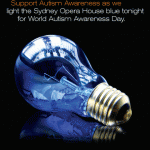Category Archives: Autism/Special Needs
Book Review: “Carly’s Voice” & Autism Tips
Carly’s Voice: Breaking Though Autism
by Arthur Fleischmann with Carly Fleischmann
I highly recommend this book to anyone who works with children or adults with non-verbal autism and to anyone who would like to have a better understanding. My friend, who has a granddaughter with this type of autism, recommended this book to me. I’m so glad she did! It gives insights into non-verbal autism in a way that a therapist or doctor cannot do, through the “voice” of Carly. The book begins with Carly’s early years, her struggles with her severe autism, and the struggles of her family. But with undying persistence for many years, Carly was finally able to communicate through typing her responses at age ten.
If you read the book, be sure to read “A Conversation with Carly: The Truths and Myths About Autism” at the very end of the book. But don’t read it until you’ve read the whole story so that you have insight into Carly’s personality and character. Through reading the book, the reader gets a better understanding of just how hard it is to overcome the difficulties that accompany autism and also gets a glimpse into the day-to-day life, year-after-year.
Here are some tips that Carly gives, along with my opinions, that are useful to me in the classroom:
- Medications can cause mood changes for no reason. This could result in crying or feeling angry.
- Carly was around nine years old when she was able to “audio filter” all the sounds around her. She took in many sounds at once, some sounds that most people couldn’t hear, some sounds being louder than others. (headphones are helpful for some to do audio filtering in the classroom )
- Make sure kids with autism are around words all the time so they can develop their ability to spell. (label everything you can in the classroom) Work on simple words at first. They just need someone to give them a push and encourage them.
- Even when it may appear they are not paying attention, they usually are. They are looking at things all the time, and they are probably looking out of the corner of their eyes.
- In the very early years, use pictures to help communication.
- It takes a lot of concentration to be able to type words.
- Carly said, “Flapping and humming and rocking does not calm me down(.) it helps me cope with stuff around me.” All the sensory input can be overwhelming to those with autism – sensory overload.
- Some, like Carly, have a photographic memory that allows them to memorize a page of a book in seconds.
- Here’s insight to what it feels like for some like Carly: “…you don’t know what it’s like to be me. You don’t (know) what it feels like when you can’t sit still because your legs feel like they are on fire or it feels like a hundred ants are crawling up your arms. How can you help me when you don’t know?”
- Carly said once, “I act up because I feel so trapped inside myself.”
- “When I look at someone I take over a thousand images of that person’s face in less than a minute. The more I look…the more pictures I take…my brain…gets full. I am no longer able to process…and I am forced to turn away.” (Carly’s experience)
- Many with non-verbal autism have an inner voice but don’t know how to express themselves. Don’t give up on them!
- You can visit Carly on Facebook @ Carly Fleischmann.
At-Home Fitness Tips for Children with Autism
AT-HOME FITNESS TIPS FOR CHILDREN WITH AUTISM RELEASED DURING AUTISM AWARENESS MONTH, Guest post by Suzanne Gray:
More than half of the nation’s children with Autism are overweight. Being overweight can cause numerous problems such as: bone and joint issues as well as cardiovascular disease and diabetes. This has influenced Suzanne M Gray, a fitness expert, to create exercise programs for individuals with autism.
Gray is the CEO of Right Fit Sport and Wellness Center in Willowbrook, IL, and has been creating fitness programs and working with individuals who have special needs for more than 30 years. She has seen how exercise improves an individuals’ motor skills, muscle tone, and socialization skills. Exercise is also beneficial in eliminating self-destructive and self- stimulating behaviors in children with Autism.
Her latest program, “Five to Stay Alive,” consists of at-home activities recommended for children with autism to help fight obesity. They include:
1. Around the Block. Create a neighborhood path for children to follow and have your child run this path a designated number of times per day. He/she could wear a pedometer to measure steps and calories and track progress.
2. Raise the Bar! You’re a Star! Start with a dowel rod and raise it over head and back down. Eventually this can be substituted for weight bars.
3. Chair Squats. This movement is required for most power moves of the lower extremities and most athletic events.
4. Push-ups. If your child is able, have them do a designated number of push- ups every day.
5. Jumping Jacks. Again, depending on where children are on the spectrum, will make a difference in how many they can do.
Chart all progress on a chart and keep track of repetition and loads. Offer incentives as motivators such as stickers or a fat-free dessert.
Kids with Autism benefit greatly from exercise. A structured routine is essential to see results. Another fitness tip is to combine music and play with exercise because it enhances the child’s sensory response while boosting independence, happiness and self-esteem. “The biggest benefit”, says Gray “is weight loss”. Be sure to check out Suzanne’s book, “101 Games and Activities for Youth with Autism”, and her DVD “Raising the Bar: Exercises for Youth and Adults with Autism”, for more information on fitness for individual with Autism. To learn more about Suzanne Gray log on to http://www.right-fit.com.
April 2, 2011 is World Autism Awareness Day
I am a special education teacher, and this is dear to my heart.
.
 April 2nd is the date of the annual celebration of World Autism Awareness Day. Many events will be going on around the world in the U.S., Canada, Australia, Brazil, Hungary, India, Ireland, Mexico, United Kingdom, and the list goes on and on. Famous people and celebrities will be in attendance at some events. Much will be done to educate people on how to communicate with people who are autistic..
April 2nd is the date of the annual celebration of World Autism Awareness Day. Many events will be going on around the world in the U.S., Canada, Australia, Brazil, Hungary, India, Ireland, Mexico, United Kingdom, and the list goes on and on. Famous people and celebrities will be in attendance at some events. Much will be done to educate people on how to communicate with people who are autistic..
 In the United States, we are using the whole month of April as Autism Awareness Month to educate the public about issues within the autistic community. People are encouraged to contact their local representatives as well as congressional representatives to “Vote 4 Autism.” For more information about this legislation and to take action to support it, visit Vote4autism.org.
In the United States, we are using the whole month of April as Autism Awareness Month to educate the public about issues within the autistic community. People are encouraged to contact their local representatives as well as congressional representatives to “Vote 4 Autism.” For more information about this legislation and to take action to support it, visit Vote4autism.org.
 “LIGHT IT UP BLUE“ is the theme in Australia as well as other places as the Sydney Opera House and other buildings around the world are lit up in blue lights for World Autism Awareness Day. They are encouraging people to sign up on the site and light their own blue light bulb.
“LIGHT IT UP BLUE“ is the theme in Australia as well as other places as the Sydney Opera House and other buildings around the world are lit up in blue lights for World Autism Awareness Day. They are encouraging people to sign up on the site and light their own blue light bulb.
At my school, many of the faculty wear blue in honor of Autism Awareness Day. If you have a chance, wear blue on April 2nd. I definitely plan to be wearing blue on that day.
 If you have the chance to watch this, I highly recommend the movie based on the life of “Temple Grandin,” who has autism. This movie won seven Emmy Awards, including Best-Made-for-Television Movie. Here’s a summary of the movie in case you’re interested. Claire Danes does an excellent job portraying Temple, which Temple herself admits. Also, Grandin has her own website, Temple Grandin, Ph.D.
If you have the chance to watch this, I highly recommend the movie based on the life of “Temple Grandin,” who has autism. This movie won seven Emmy Awards, including Best-Made-for-Television Movie. Here’s a summary of the movie in case you’re interested. Claire Danes does an excellent job portraying Temple, which Temple herself admits. Also, Grandin has her own website, Temple Grandin, Ph.D.
.
Read here for more info about Autism Awareness & Tips.

